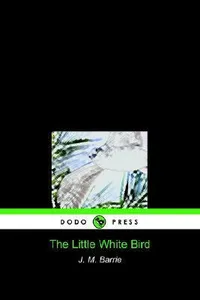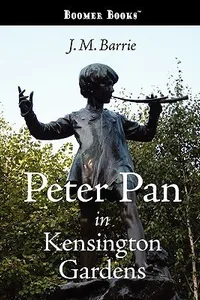Step into the enchanting world of Peter Pan, where the boy who never grows up whisks you away to Neverland’s magical shores! Created by J.M. Barrie, this timeless fantasy series captures the thrill of eternal youth, daring adventures, and the bittersweet tug of growing up. With pirates, fairies, and Lost Boys, Peter Pan’s story invites readers to embrace imagination and soar.
Since its debut over a century ago, Peter Pan has become a cultural treasure, blending whimsical storytelling with deep reflections on childhood. Whether you’re a lifelong fan or new to Neverland, this series promises a journey filled with wonder and heart.
How Peter Pan Began
J.M. Barrie, a Scottish playwright and novelist, first introduced Peter Pan in 1902’s The Little White Bird, where the character appeared in a brief, magical tale. Inspired by Barrie’s friendship with the Llewelyn Davies boys and their playful games, Peter’s story grew into the iconic 1904 play Peter Pan, or The Boy Who Wouldn’t Grow Up. The 1911 novel Peter and Wendy solidified Neverland’s place in literary history. Barrie’s own longing for the freedom of youth shaped Peter, a character who embodied both joy and defiance against time.
The Heart of Peter Pan
The Peter Pan series centers on two key works. Peter and Wendy (1911) follows Peter, a mischievous boy who can fly, as he lures Wendy Darling and her brothers to Neverland. There, they battle Captain Hook, befriend fairy Tinker Bell, and join the Lost Boys in thrilling escapades. The Little White Bird (1902) offers an earlier glimpse of Peter as a baby who escapes to Kensington Gardens, hinting at his eternal youth. Barrie also published Peter Pan in Kensington Gardens (1906), a standalone tale expanding on Peter’s origins.
The series’ themes weave a delicate balance: the joy of childhood clashes with the inevitability of growing up. Neverland, a vibrant island of endless summer, serves as both a playground and a poignant reminder of what’s left behind. Barrie’s lyrical prose and playful tone create a world that feels alive, with characters like the cunning Hook and loyal Tinker Bell adding depth. The stories explore freedom, loyalty, and the power of imagination, making them resonate across ages.
Unlike traditional fantasy, Peter Pan leans on emotional nuance rather than epic world-building. Its intimate focus on personal growth and loss sets it apart, offering readers a chance to reflect on their own inner child.
Why Peter Pan Resonates
Peter Pan’s legacy stretches far beyond its pages, inspiring countless adaptations, from stage plays to Disney’s animated classic. Its universal themes—yearning for youth, the pull of adventure, and the fear of losing wonder—strike a chord with readers worldwide. The series has shaped children’s literature, proving that stories for young readers can carry profound emotional weight. Fans cherish Peter as a symbol of rebellion against adulthood’s constraints, keeping Neverland alive in their hearts.
Even today, Peter Pan’s call to adventure feels fresh, inviting new generations to explore its magic. Its blend of whimsy and wisdom ensures it remains a beloved classic, as timeless as Peter himself.
- First Appearance: 1902 in The Little White Bird
- Main Novel: Peter and Wendy, published 1911
- Setting: Neverland, a magical island of eternal childhood
- Notable Character: Captain Hook, Peter’s pirate nemesis
Dust off Peter and Wendy and dive into Neverland’s fantastical world! Whether you’re chasing fairies or dueling pirates, Peter Pan’s adventures will spark your imagination and remind you to stay young at heart.



